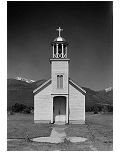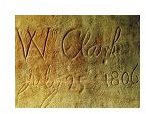Interesting Historical Facts About Montana You Never Knew
Montana became the 41st state to be admitted to the Union in 1889, but its history began long before that. It has a rather expansive Native American history, spotted with many battles between tribes, as well as with the “white men”. The Lewis and Clark expedition also changed its history forever, and no one could ever forget that infamous battle that will forever be known as “Custer’s Last Stand”.
Lewis and Clark Go Adventuring
When the Louisiana Purchase occurred in 1803, Thomas Jefferson created the Corps of Discovery and sent out Army Captain Meriwether Lewis and William Clark to explore the new territory. One of their main goals was to make it to the Pacific Northwest and claim it for the U.S. before the Europeans could. On their way, they passed through Montana, becoming the first white men to enter the area. On the return journey, the pair split up to they could explore more territory.
Clark signed his name and the date into what is now known as Pompey’s Pillar, located near Billings, Montana. It is named for the son of Sacagawea, their Native American guide. It is considered the only physical evidence that the expedition passed through Montana. Lewis ran into the group of Native Americans known as the Blackfeet and while they got along for a while, eventually a fight broke out and several Natives were killed. Lewis and his crew were forced to flee the area and met up with Clark again, and then they returned home.
The Native Americans and the Military

By the time Lewis and Clark had reached Montana, the Native Americans had already been there for thousands of years and consisted of many different tribes, including the Blackfeet, the Crow, and the Cheyenne. After Lewis and Clark had explored the area, some tribes began hearing about missionaries working with other tribes, helping them out with agriculture and medicine. The Montana tribes sent representatives to the U.S. to ask for their own missionaries, and in 1841 a man named Father DeSmet returned with them and founded St. Mary’s Mission. This led to the creation of forts and trading posts for the U.S. military in Montana.
Fort Owen was founded in 1850 just north of St. Mary’s Mission, and eventually became known as the “Birthplace of Montana”, as it became a very busy trading post due to its position on the river. In 1865 a second fort, Benton, was purchased by the U.S. Army (it had previously been used for fur trade), and a third fort, Shaw, was built in 1867. Shaw would later have the distinction of being turned into one of the re-education schools that the U.S. used for “Americanizing” the local Native Americans.
Poor General Custer

The growing power of the U.S. government and the unhappiness of the Native Americans with their freedom being removed on a daily basis was bound to have bad results. Battles between the Native American tribes and the U.S. army were frequent, but none is as famous as the Battle of the Little Bighorn. The battle took place in the summer of 1876 in eastern Montana, near the Little Bighorn River. It was considered a big victory for the Native Americans, and is often known by a different name: Custer’s Last Stand.
The battle is named after George Armstrong Custer, a Lieutenant Colonel and later General in the U.S. Army. Custer is known throughout history for his ruthlessness, and even cruelty, in battle, and at one point was even accused of mistreating the men in his division. It should come as no surprise that poor planning would lead to his demise. At the Battle of the Little Bighorn, Custer’s troops were completely outnumbered by the Native Americans, and were slaughtered mercilessly. Custer and a small group of his men survived until the very end, but were backed into a corner and killed - hence the name “Custer’s Last Stand”.
References
- Wolfgang Sauber. “General Custer”. http://commons.wikimedia.org/wiki/File:Gilcrease_-_General_Custer.jpg
- BLM Photo. “Signature of William Clark”. http://commons.wikimedia.org/wiki/File:Popi_sig550.jpg
- Pompey’s Pillar National Monument, http://www.pompeyspillar.org/.
- Al Huntsman. “St. Mary’s Roman Catholic Mission”. http://commons.wikimedia.org/wiki/File:St._Mary%27s_Roman_Catholic_Mission.jpg
- Friends of the Little Bighorn Battlefield, http://www.friendslittlebighorn.com/.
- Montana’s Official State Website, http://www.mt.gov/.
